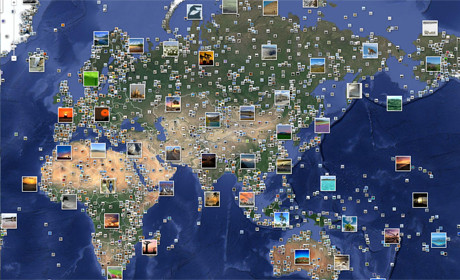In 2018, 2.5 quintillion bytes of data was created every day and 90% of all data was generated in the two years prior (1). This trend has only intensified (2). The immense pile of data brings serious risks but also offers opportunities in unexpected fields. Open-source investigations is one of those fields, where Bellingcat has the most influential voice.
First, what is an open-source investigation? An open-source investigation makes use of data that is accessible for almost anyone online. Examples are satellite images in Google Earth or reverse image searches in Yandex. Findings are openly shared with other ‘investigators’ so that every finding can be a piece of the bigger puzzle. This all sounds great but this can’t really uncover big stories right? Next section will show how Bellingcat impacted MH17, Uyghurs in China and child abuse.
Bellingcat has contributed immensely to the MH17 investigation. From the moment that this disaster happened, it has uncovered, arguably, the most important details such as the origin of the Buk missiles and the involvement of generals. The origin of the Buk missiles was derived from various user videos posted on YouTube and other social media and historical Google Earth imagery. Consequently, investigators were able to establish a time frame of the Buk missiles that showed that the Buk missiles were transported from Russia to Ukraine (3). In one of their investigations regarding the Uyghurs in Xinjiang, China, it also used satellite imagery. Accessing the Xinjiang area is very difficult for journalists currently. Yet, by comparing current and historical satellite images, Bellingcat showed that various mosques had been demolished (some of which 800 years old) (4). These kind of satellite images are accessible for anyone with an internet connection. Finally, Bellingcat has assisted Interpol in finding child abusers. Interpol is in possession of 40 million child sexual abuse from all over the world, but it can be very hard to locate every image. Hence, some images are carefully shared with the public (e.g. only a building in the background of a picture is shared). ‘Investigators’ then start to collaborate online (Twitter) to identify certain details. Someone might recognise a kind of bricks that are only used in certain parts of Asia and someone else might use shadow directions to geolocate an image further. As of 23 January 2020, Europol has received more than 24,000 tips which have led to the identification of ten victims and the prosecution of two child abuse offenders (5).
The beauty of this form of investigating and reporting is that all evidence is presented openly so that the level of subjectivity is low. Maybe you don’t like the truth, but what you see is what you get. In the coming years, the impact of open-source investigating will only increase. There will be more data, more advanced software and better educated data investigators.
Recommended Bellingcat pages:
Tutorials: https://www.bellingcat.com/category/resources/how-tos/
MH17: https://www.bellingcat.com/tag/mh17/
China: https://www.bellingcat.com/tag/china/
#StopChildAbuse: https://www.bellingcat.com/tag/stopchildabuse/
Sources:
(1) https://www.forbes.com/sites/bernardmarr/2018/05/21/how-much-data-do-we-create-every-day-the-mind-blowing-stats-everyone-should-read/
(2) https://www.statista.com/statistics/871513/worldwide-data-created/
(3) https://www.bellingcat.com/app/uploads/2017/07/mh17-3rd-anniversary-report.pdf
(4) https://www.theguardian.com/world/2019/may/07/revealed-new-evidence-of-chinas-mission-to-raze-the-mosques-of-xinjiang
(5) https://www.bellingcat.com/news/uk-and-europe/2020/04/22/creating-impact-a-year-on-stop-child-abuse-trace-an-object/


Dear Hendrik,
I think you are raising a very interesting subject here. Following the Business Information Management Course, this does remind me of real Disruptive Innovation. Using open-source platforms is another way of approaching a once extremely bureaucratic investigation. Bellingcat could save seas of time while at the same time bringing more justice in the world.
These are good points and developments, but I do have one question; it might be possible to post fake images/news/blogs on bellingcat and thus on a investigation, does the website monitor this type of behavior? Or is it really as ‘open’ as it claims to be? Misleading information is a problem that is very evident in social media currently, it could be that the same is about to happen to Bellingcat with even bigger consequences (justice not being served). Do you think this is a possibility? Let me know!
Kind regards,
Martijn